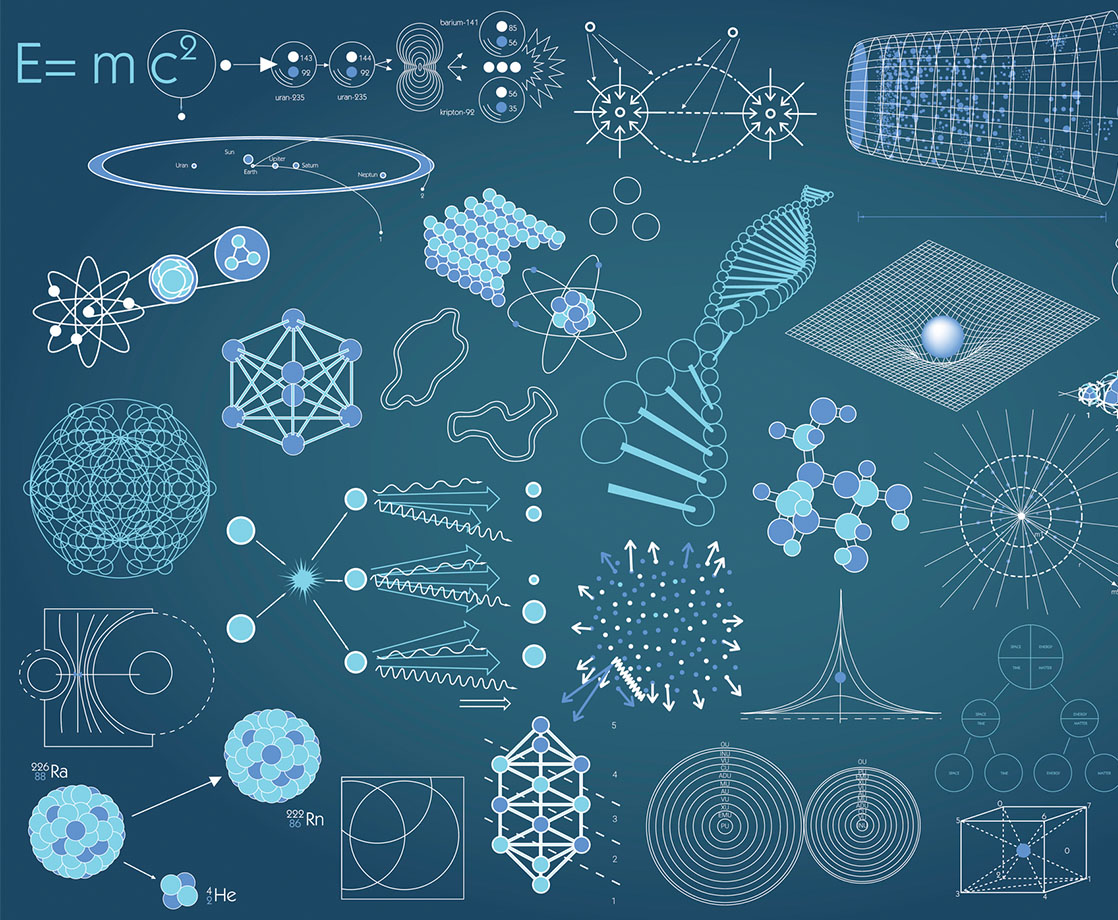Lead image via iStock Photo
It’s fair to say the average person doesn’t know how a credit card works. To wit, when you swipe your card through a reader at the gas station, it uses black magic to contact a nearby wizard who will instruct the machine to empty your bank account. Just kidding, but could you disprove such a claim by explaining the real-life physics behind everyday technology? Probably not.
Credit cards actually use magnetic induction to convert the bits of information on the black stripe into voltages that then can be processed and read. The same process occurs when you place your electric toothbrush in its recharger stand, which creates an electrical current in the toothbrush. A similar reaction also happens when you hold up your metrocard to a reader on the bus; there’s a little coil around the outer edge of that card and changing magnetic fields in the reader create a current in the coil that sends information back to the reader, which tells it you have enough money in your account. In other words, basic physics appear again and again in our daily lives, be it through use of public devices, household objects, and next-gen technology like smartphones and laptops. We place agency into technology and never question how it works; we simply know when our tools are functioning and when they aren’t. This is all well and good, but doesn’t that mean we only have an elementary grasp of the world around us?
In The Physics of Everyday Things: The Extraordinary Science Behind an Ordinary Day, out now on Crown Press, author James Kakalios, a professor in the School of Physics and Astronomy at the University of Minnesota, seeks to address the public’s limited understanding of the physical world, and also force us to question the hows and whys of the functioning behind the seemingly-basic technology we use on the regular. The text explores the inherent physics in everything from smartphones and flat-screen TVs to coffeemakers and elevators. With chapters like “You Begin Your Day” and “You Drive Into the City,” Kakalios takes readers on a journey that depicts the scientific interactions we take for granted as we go about our day. “I decided to write The Physics of Everyday Things to show how physics is all around us,” Kalakios explained to MERRY JANE. “We’re soaking in it, and the more that we know about this, the more we can appreciate what we have.”
MERRY JANE talked to Kakalios by phone to find out how he approached making a dense subject digestible to us non-scientists, as well as how writing the book made him question the way he observes his surroundings. He even talked about the fallacy of flying cards, and the myriad mysteries that are still yet to be resolved in the realm of physics. Sure, understanding how a metrocard functions isn’t going to save you in the apocalypse, but absorbing these concepts will undoubtedly encourage readers to do a double take every time they use an object with a barcode or chip in it — e.g. multiple times a day, every day.
This interview has been edited for length and clarity

MERRY JANE: In high school, I remember physics attracting the really, really smart kids. How did you set about making the somewhat-dense subject matter interesting to the average person who isn’t a science wiz?
James Kakalios: A lot of people find physics dry and are put off by it. What I and other scientists do is take the things that people are interested in and use that to illustrate or explain physic principles. I previously wrote The Physics of Superheroes, a book where I talk about the things that comic book superheroes do. While their super powers themselves are impossible, very often the things that they do using those super powers are physically correct. As such, you can take someone’s interest in superheroes and illustrate real physics. One way to do it is to take things that people already want to know more about and you leverage that and use it to explain some real-life science.
Besides teaching people about the physics of everyday things, how do you hope this book will affect the reader’s perceptions of the world on a day to day basis?
My perception of the world changed while writing this book. It was almost like being a spy and being able to spot all the people who are following you. I started noticing things more, like spotting all the technology while walking down a hallway in a hotel at night. I’d notice the lights come on due to the motion detectors, and think, “I should research this and find out how those work.”
I thought I knew how they worked, but it turns out I was wrong. I thought they just sent out a signal and looked to see if there was any interference in the reflective wave, and that would indicate to turn the lights on. Well, that’s one way that motion sensors work, but another way is that they just actually are much more passive and basically like night vision goggles. In that case, they are detecting the infrared radiation that we all give off, because we are much more hotter than our surroundings, and the sensors convert that infrared radiation information into a voltage that turns the lights on.
So as you’re walking around just making breakfast, you’re driving into the city, you’re surrounded by technology, surrounded by physics… I just started noticing this more and more as I was writing the book and I’ve been told by people who’ve read the book that they’ve experienced the same thing where they suddenly start seeing things that they took for granted and began thinking about them even more.
Like you said, most people take technology for granted. Why do you think it’s important for us to know how it all works?
You can use your smartphone and you don’t need to know how taking a digital photograph actually works. But on another level, a lot of this technology started off as federally-funded research, and then it moved on to be integrated into commercial devices. So, to some extent, everyone paid for it, so you might as well get your money’s worth. And then on another level, it’s important because we aren’t all scientists and engineers — my book isn’t meant for them. It’s meant for people who aren’t scientists.
If you’re not a scientist or engineer, you’re still a citizen and potentially a voter. As citizens and voters, we’re all called upon more and more to have opinions about scientific and technological issues, whether it’s climate change or alternative energy, genetically modified organisms, vaccinations, nanotechnology, and so on. The more that we know about science, and the more that we can educate ourselves, the better decisions we’ll wind up making [collectively].
Why is it necessary to discuss the atomic and molecular level of physics in order to understand how those principles profoundly enable our way of life?
One of the big developments in physics was the development of quantum mechanics, which is the branch of physics that deals with how atoms interact with each other and how they interact with life. With quantum mechanics, we get solid state physics and semiconductor physics, and without that you’re not going to understand the chips in your smartphone, you’re not going to get light-emitting diode, you’re not going to get photodetectors or solar cells. So at some level, you have to understand at least a little bit how the atoms and molecules interact with life if you’re going to understand how things like a TV remote control works.

How much longer until we see flying cars like in The Jetsons?
The problem with the flying car or jetpack is it takes a ridiculous large amount of energy to lift a car up off the ground. Science fiction writers from 50 years ago thought we’d have some sort of revolution in energy that would enable cars to lift up. What we got instead was a revolution in information, and that came about thanks to solid state physics and semiconductor physics, which in turn was made possible by quantum mechanics.
Instead of jetpacks and flying cars, we got laptops and cell phones. To get a flying car, you have to have some way of storing a vast amount of energy and delivering it very quickly. There are some devices called supercapacitors that are still in the very early research stages, but if they develop enough and we get advances and breakthroughs in energy storage technology, who knows what may happen. But for the time being, you’re going to have to stay on the ground.
What mysteries in everyday physics are still out there? What aspects do we still not understand?
We’re very good at understanding the properties of electromagnetism if we treat the electrons as individuals that don’t talk to each other. But if the electrons are all interacting into some collective manner, we’re still just struggling to understand the properties of materials in that way.
There are also a lot of interesting things we don’t understand that are more abstract, such as astrophysics. We see galaxies spinning that are rotating so fast that they should tear themselves apart, and yet they seem to be stable. We can look at all the stars that are in the galaxy, and there’s not enough mass to provide enough gravity to hold the galaxies together, so there must be something else that’s holding the galaxy together — e.g. dark matter. But we don’t know what that is. We don’t have the first idea what that is, so there are mysteries right here in devices and technology in your home, as well as things out in the galaxy, that we still don’t understand. There’s no shortage of things to study and to investigate because every time we answer a question it leads to another question.
Since this is a marijuana site and you’re a scientist what are the physics of smoking a joint?
[laughs] I must admit I’ve never thought about that in any detail. I think I’ll take a pass on that.
What are the main takeaways that you want readers to gain from reading your book?
Even though we may take it for granted, physics is all around us. It is fairly universal, so physics that applies to one thing will also possibly explain another phenomenon. The big takeaway is that people have studied the world and used reason and evidence to figure out how it all works. Once you figure that out [and understand the basics], you can build all sorts of devices that make our lives much, much easier. We take this all for granted, but this didn’t happen by accident. It didn’t just fall off of a tree. We had to actually go and do the hard work in figuring out how the world works. Once we know that, we can then do the other hard work, like building devices that make our life easier and evolving what we’ve already created. We should all appreciate what we have already accomplished.
'The Physics of Everyday Things' is out now. Order your copy here.
Follow Seth on Twitter.











